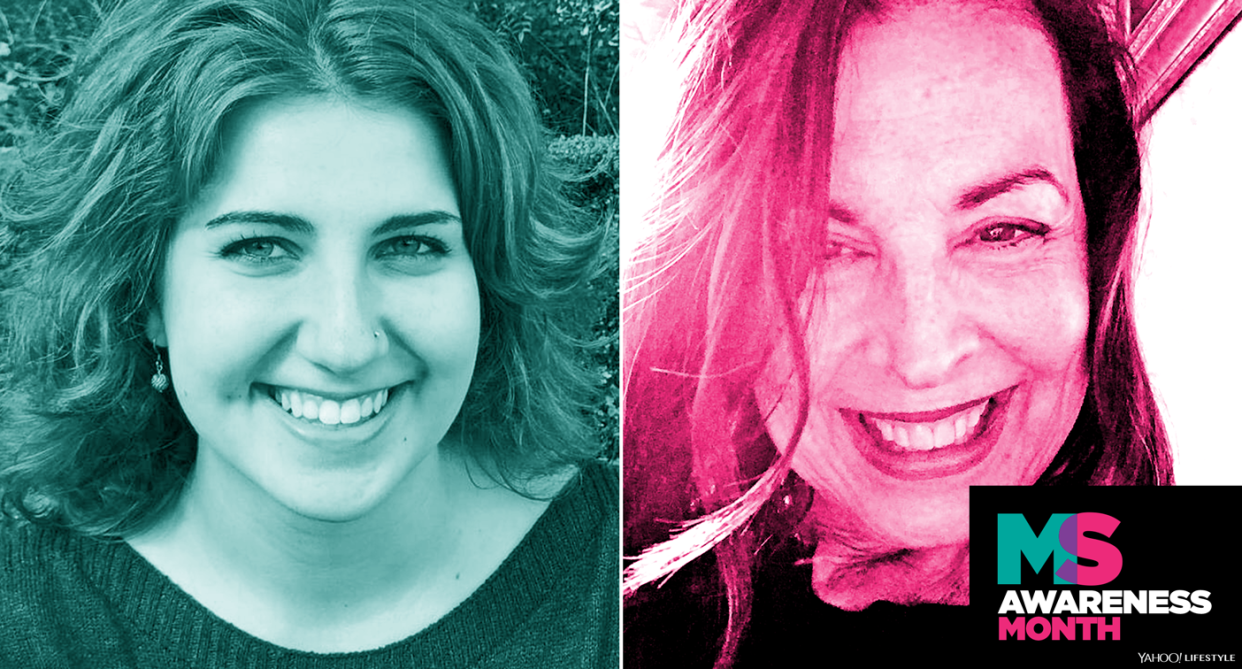'But you don’t look sick': What it's like to live with a 'silent' disease

Have you ever been to a doctor who sees and hears you, but doesn’t actually look or listen?
In the more than two decades that I’ve had an autoimmune disease — ulcerative colitis — one particular time stands out. Three years ago, I sat in front of a colorectal surgeon, explaining that the pain I was experiencing was beyond that of any other flare-up. The surgeon said that I have fissures, and that they’ll eventually resolve with a sitz bath and topical medicine.
In the weeks that followed, I smiled my way through meetings and social commitments until I couldn’t take the pain anymore. I went to the surgeon again, but she sent me home, and I ended up in the ER that weekend.
The CT scan detected what my surgeon couldn’t: a complication from my ulcerative colitis — I had an infection. When she came in for my emergency surgery, her face was nearly as pale as mine. She apologized and explained I didn’t look or sound like I was in that much pain during my appointments.
My gastroenterologist and I eventually formed a treatment plan to keep me in remission for years. In addition to my anti-inflammatory mesalamine medicines, I ramped up infusions of a newer medicine, Entyvio. I had always been hesitant to go farther down the infusion road — I had tried another infusion drug before that didn’t work, and I worry about side effects — but I realized that keeping my autoimmune disease under control, and reducing complications from the disease, would keep me out of the hospital and able to lead a normal life.
Fighting an autoimmune disease is like a brutal sports game. The insurance company is the referee. They throw flags when things get out of hand, but sometimes things get rough before they step in. Your doctor is your coach. But the coach can’t predict everything. You develop strategies to be defensive and offensive in the attack against your opponent, which is the disease.
Given that there are more than 100 autoimmune diseases, I’m not alone in struggling to be seen and heard. Rheumatologist Daniel Solomon, a professor of medicine at Harvard Medical School and chief of the section of clinical sciences at the Brigham and Women’s Hospital, recognizes the challenges of illnesses that are not very “visible.”
“Many autoimmune conditions do not have definitive testing and thus accurate diagnosis requires testing, physical examination, and a careful assessment of symptoms,” Solomon says. “Symptoms like fatigue and pain are not very specific. Thus, they can help diagnose an autoimmune disease, but they also can be observed with many other conditions.”
Solomon understands the frustration patients experience when they’re bounced between different doctors in the diagnostic stage. Receiving a referral to the right specialist is key. Once you have a fit, you can work on strategies to communicate your symptoms.
“I often ask patients to keep a daily or weekly diary to help me understand the timing of symptoms, whether the symptoms relate to specific activities, and the severity of symptoms,” he says. “There are an increasing number of smartphone apps that make this easier and more accurate. Some of these apps can directly communicate with care providers.”
When he saw a need for this kind of resource a year ago, Solomon began developing an app with colleagues. It’s currently in trial.
Tracking the “less visible” symptoms over time may keep them from being overlooked. Paige Wyant, associate chronic illness editor at the Mighty, has joint pain and fatigue that didn’t get close scrutiny for years. Wyant was only recently diagnosed with Behçet’s disease (a rare condition that causes blood vessel inflammation).

“When I go in for an appointment to discuss long-term treatment options, but they see that perhaps my eyes are really bloodshot that day or I have an outbreak of erythema nodosum bumps on my legs, that’s what gets their attention,” Wyant says. “Their primary focus becomes the symptom that is visibly flaring that day — even if it’s not the symptom that is bothering me the most.”
Once a doctor has gathered long-term data on these less visible symptoms, truly listening to the patient’s full story can make a big difference.
“The most successful interactions I’ve had with doctors happen when they turn away from the equipment, their computer, their notes and simply listen to what I’m telling them,” Wyant points out. “They ask for my thoughts, and engage in a conversation.”
Ultimately, Wyant makes the most progress when doctors see her as a person, not just a patient. “They take a step back to look at the bigger picture of my life and my health rather than just narrow in on one single symptom that happens to be visible that day,” she says.
However, less visible symptoms may still fall through the cracks. And it’s OK to be loud to make up for your silent disease.
I turned to Art Markman, a cognitive psychologist at the University of Texas at Austin and co-author of Brain Briefs, for advice on interacting with medical staff when you feel you’re not being heard or seen.
“Honestly, it is important to be pushy when it comes to health care,” he says. “Your aim is not to be friends with your health care provider. You need to focus on getting high-quality care without worrying about the reaction of your providers to your requests and responses.”
When you notice yourself becoming passive in a medical setting, Markman has a tip: “If you have trouble advocating for yourself, then bring along a friend or family member who is not that agreeable and is willing to stand up for you.”
Joy Brandys, an artist from Buffalo, N.Y., does not have the typical symptoms of rheumatoid arthritis, such as hand deformity. “No one would guess I’m in pain most of the time or fatigued,” she says. “I’m always concerned that if I decline an invitation or leave early from a social gathering that someone wouldn’t understand.”

Fortunately, her closest friends and family are understanding. For those whose loved ones still don’t get it, Markman has advice: “One strategy is to draft an email that describes your illness and the implications of it that you can send to people on your life on an as-needed basis to help them understand what you are going through.”
As for dealing with the rest of the world who can’t see your illness, Brandys has a message:
“If you see someone taking their time crossing a street … just think, if you were in pain every day, awakening to stiff limbs and just trying to make it through the day … how would you feel if you were getting dirty looks and beeping horns to get going? Anyone you see out there can be in pain. Be nice!”
Read more from Yahoo Lifestyle:
How an MS diagnosis inspired these 5 people to get into the best shape of their lives
Eating disorders are much more common in older women than you might think
Meet the powerful women who flaunt, not hide, their their scars
Follow us on Instagram, Facebook, and Twitter for nonstop inspiration delivered fresh to your feed, every day.


